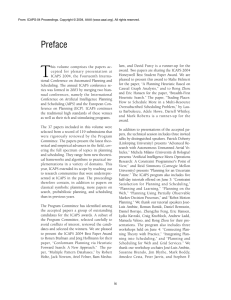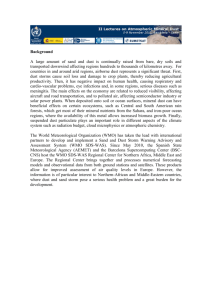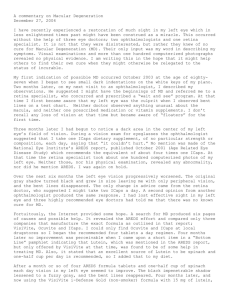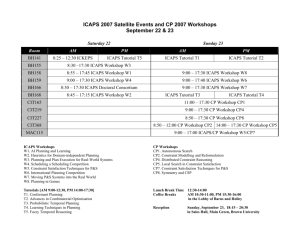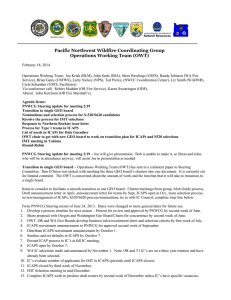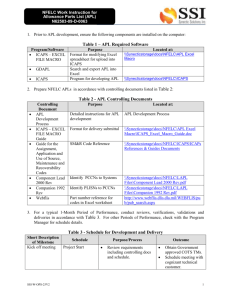I nteractions in C osmic and A tmospheric P article S ystems
advertisement
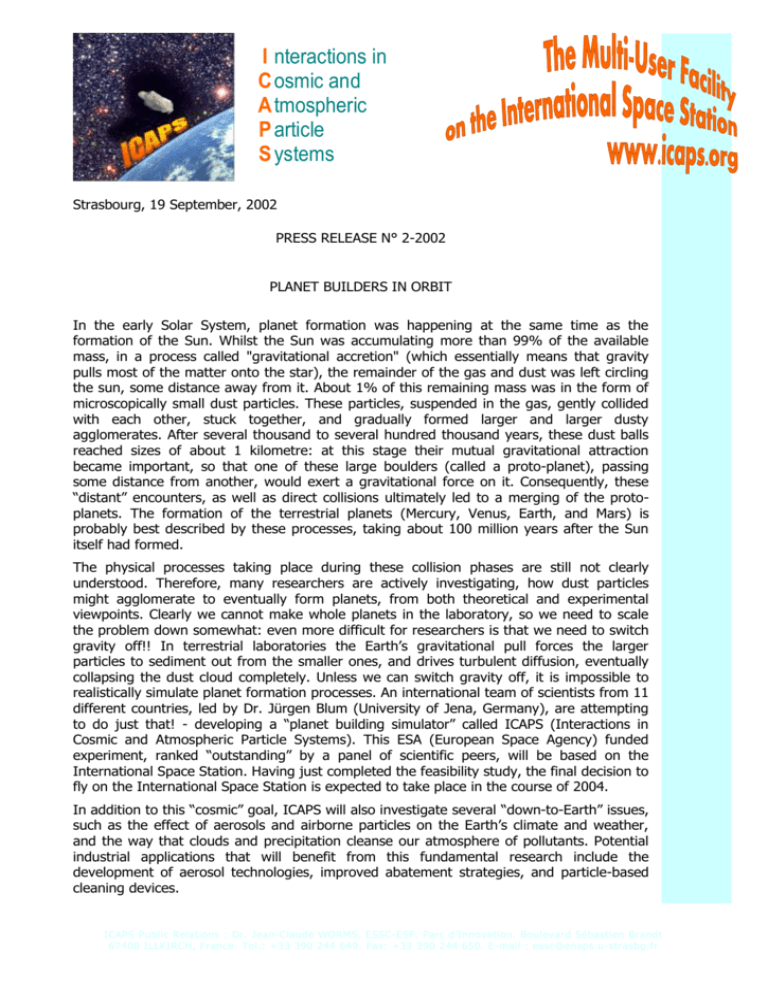
I nteractions in Cosmic and Atmospheric P article S ystems Strasbourg, 19 September, 2002 PRESS RELEASE N° 2-2002 PLANET BUILDERS IN ORBIT In the early Solar System, planet formation was happening at the same time as the formation of the Sun. Whilst the Sun was accumulating more than 99% of the available mass, in a process called "gravitational accretion" (which essentially means that gravity pulls most of the matter onto the star), the remainder of the gas and dust was left circling the sun, some distance away from it. About 1% of this remaining mass was in the form of microscopically small dust particles. These particles, suspended in the gas, gently collided with each other, stuck together, and gradually formed larger and larger dusty agglomerates. After several thousand to several hundred thousand years, these dust balls reached sizes of about 1 kilometre: at this stage their mutual gravitational attraction became important, so that one of these large boulders (called a proto-planet), passing some distance from another, would exert a gravitational force on it. Consequently, these “distant” encounters, as well as direct collisions ultimately led to a merging of the protoplanets. The formation of the terrestrial planets (Mercury, Venus, Earth, and Mars) is probably best described by these processes, taking about 100 million years after the Sun itself had formed. The physical processes taking place during these collision phases are still not clearly understood. Therefore, many researchers are actively investigating, how dust particles might agglomerate to eventually form planets, from both theoretical and experimental viewpoints. Clearly we cannot make whole planets in the laboratory, so we need to scale the problem down somewhat: even more difficult for researchers is that we need to switch gravity off!! In terrestrial laboratories the Earth’s gravitational pull forces the larger particles to sediment out from the smaller ones, and drives turbulent diffusion, eventually collapsing the dust cloud completely. Unless we can switch gravity off, it is impossible to realistically simulate planet formation processes. An international team of scientists from 11 different countries, led by Dr. Jürgen Blum (University of Jena, Germany), are attempting to do just that! - developing a “planet building simulator” called ICAPS (Interactions in Cosmic and Atmospheric Particle Systems). This ESA (European Space Agency) funded experiment, ranked “outstanding” by a panel of scientific peers, will be based on the International Space Station. Having just completed the feasibility study, the final decision to fly on the International Space Station is expected to take place in the course of 2004. In addition to this “cosmic” goal, ICAPS will also investigate several “down-to-Earth” issues, such as the effect of aerosols and airborne particles on the Earth’s climate and weather, and the way that clouds and precipitation cleanse our atmosphere of pollutants. Potential industrial applications that will benefit from this fundamental research include the development of aerosol technologies, improved abatement strategies, and particle-based cleaning devices. ICAPS Public Relations : Dr. Jean-Claude WORMS. ESSC-ESF. Parc d’Innovation. Boulevard Sébastien Brandt 67400 ILLKIRCH, France. Tel.: +33 390 244 649. Fax: +33 390 244 650. E -mail : essc@ensps.u-strasbg.fr The World Space Congress 2002 and the COSPAR General Assembly feature a session dedicated to the interpretation of measurements from solar system “small objects” (asteroids, comets, interplanetary dust particles). This session (B1.2) will take place from Friday, 18 October, 2002 to Saturday, 19 October, 2002, at the Georges R. Brown Convention Centre in Houston, Texas. The session will open with a solicited review by Dr. J. Blum, on the topic: “Pre-planetary dust aggregation” (Friday, 18 October, 9.30 am). Other ICAPS-related highlights of that session include presentations on “Study of the optical and mechanical properties of regolith with the ICAPS facility” (Worms, 18 October, 14.30), or “Cosmic dust physical properties and the ICAPS facility on board the ISS” (LevasseurRegourd, 19 October, 12.25). Media representatives attending the World Space Congress and COSPAR, and interested in meeting with the ICAPS science investigators are invited to attend session B1.2 on the indicated dates, or contact the PR scientist (contact points below). Short biography: Jürgen BLUM Jürgen Blum holds a PhD in physics from the University of Heidelberg and a habilitation degree (postdoctoral lecturing qualification) from the University of Jena. He is Acting Director of the Astrophysical Institute and University Observatory of the University of Jena and conducts research in planet formation with emphasis on experimental research on dust aggregation. He is the Principal Investigator of ESA’s ICAPS facility (study of particle systems on the ISS) and of an ESA-funded sounding rocket experiment on rapid dust aggregation. He has successfully flown a Space Shuttle experiment and a sounding rocket experiment on Brownian motion-driven aggregation of proto-planetary dust. Short biography: Jean-Claude WORMS Jean-Claude Worms holds a PhD in astronomy & space science from the University of Paris 6 and is Associate Researcher to the French Laboratoire de Physique et Chimie de l’Atmosphère (Orléans), Laboratoire des Sciences de l’Image et de la Télédétection and Laboratoire des Systèmes Photoniques (Illkirch), and Service d’Aéronomie (Verrières-leBuisson). Researching in radiative transfer in granular media and pre-planetary aggregation, he is a Principal Investigator on the CNES-funded PROGRA2 facility (polarimetry of dust clouds in microgravity) and LIBRIS project (in-orbit optical detection of space debris), and Co-Investigator of the ESA ICAPS facility. He was/is Main Science Organiser of solar system small bodies-related sessions in COSPAR (1998 and 2002). For further information: Dr. Jean-Claude WORMS Head, ICAPS PR Team Tel.: +33 390 244 649 wormsjc@ensps.u-strasbg.fr www.icaps.org ICAPS Public Relations : Dr. Jean-Claude WORMS. ESSC-ESF. Parc d’Innovation. Boulevard Sébastien Brandt 67400 ILLKIRCH, France. Tel.: +33 390 244 649. Fax: +33 390 244 650. E -mail : essc@ensps.u-strasbg.fr
